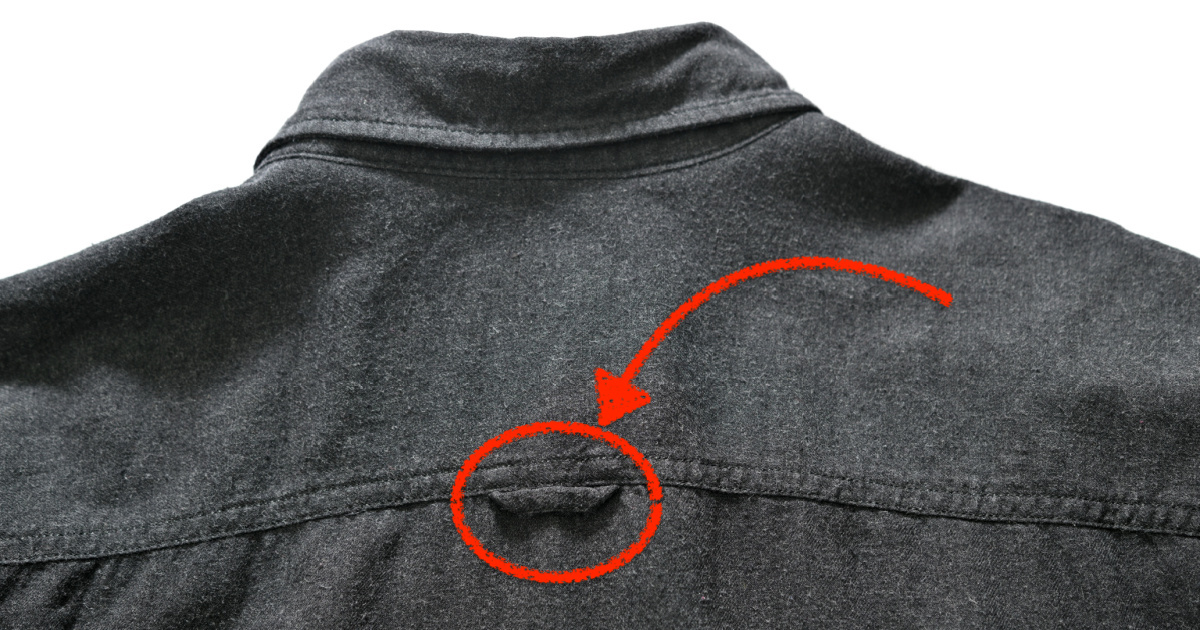The button-down shirt has been a timeless wardrobe essential for, well, a long time. However, a subtle detail that often goes unnoticed is a loop on the back of the shirt, commonly known as the “locker loop.”1 This feature carries a rich history and unexpected social significance. With naval pragmatism, Ivy League symbolism, and modern fashion trends, uncover the mysteries behind the locker loop.
Loops on the Back: A Practical Origin

Picture sailors in the Navy with limited storage space for their uniforms. Seeking a practical solution, the loops were implemented to allow easier hanging. The choice was a functional one rather than for fashion. These loops found their way into civilian fashion in the 1960s, marking the beginning of the locker loop’s broader appeal.
From there, the clothing manufacturer GANT played a pivotal role in popularizing the locker loop. GANT introduced these loops to keep the shirts of Ivy League students wrinkle-free in lockers (hence the “locker” loop). This marketing angle proved especially appealing and successful and appealed to the style-conscious Ivy League community.2

Male students far and wide would remove the loop to signal a change in their relationship status. In turn, women of the 60s would reciprocate by wearing their partner’s scarf. This innocent tradition, however, took a mischievous turn when daring individuals would playfully yank loops off the shirts of those they fancied, potentially tearing a sizeable hole in the shirt .3
Loops on the Back: A Nod to Tradition

As Ivy League style permeated fashion, having loops on the back of one’s shirt turned into a symbol of good taste and high quality. As the years went on, iconic brands like GANT, Sero, Wren, Creighton, and Eagle created their own versions of the locker loop. Student-athletes embraced locker loops during sporting events, showcasing the loop’s adaptability beyond its original purpose.4
Today, loops on the back of shirts persist as a nod to history and a means of personalization. While modern hangers have diminished the loop’s practicality, its presence is an homage to the once-prominent Ivy League style. Retailers like Ralph Lauren and J.Crew continue to offer shirts with locker loops, allowing enthusiasts of the past to embrace this subtle yet storied detail.
Tailoring Choices: Locker Loop Removal or Addition

For those with distinct preferences, adding a loop on the back of your shirt offers a customizable aspect to your button-down options. Tailors can easily remove or add loops based on individual preferences, allowing wearers to align their garments with both historical tradition and personal taste. While no longer a useful function, locker loops persist as a fashion vestige.
Whether used to hang shirts in lockers or simply as a design element, locker loops serve as a subtle reminder of the evolution of menswear and its connection to functional beginnings. The next time you button up a shirt, take a moment to appreciate the subtle charm and rich history encapsulated in this unassuming loop.
Source: secretlifeofmom
- “The Reason Why Button-Down Shirts Have Loops On the Back.” Mental Floss. Jake Rossen. January 10, 2020.
- “Why do button-down shirts have that little loop on the back?” Today. Anna De Souza. January 31, 2017
- “WHAT’S THAT LOOP ON THE BACK OF YOUR BUTTON-DOWN SHIRT FOR?” USA Today. Kevin Cortez. September 24, 2021.
- “Here’s Why Button-Down Shirts Have Loops On The Back.” Southern Living. Melissa Locker. April 13, 2023







